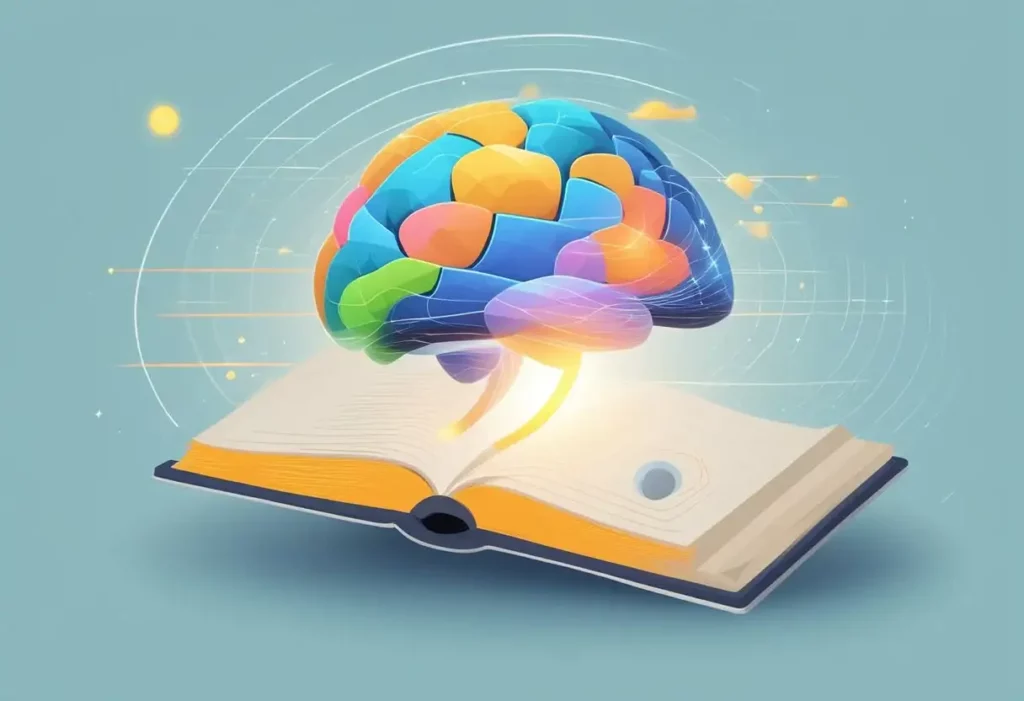Fast eBook Reading Tricks: Master Speedy Digestion of Digital Content

In the digital age, the abundance of ebooks has revolutionized the way individuals consume literature and knowledge. However, the challenge of reading efficiently to maximize retention and comprehension persists.
Readers are increasingly seeking methods to accelerate their reading speed without sacrificing understanding, driven by a desire to manage their time better and absorb more information in a world where content is ever-expanding.
While skeptics question the efficacy of rapid reading techniques, evidence suggests that with proper guidance and consistent practice, it is indeed possible to enhance reading speed without undermining the depth of engagement with the text.
These methods cater to various reading environments and genres, indicating their adaptability and broad relevance to diverse reading preferences and objectives.
Understanding Speed Reading

Speed reading is a skill that can increase the rate at which a person reads without significantly reducing comprehension or retention. Acquiring this ability involves learning several techniques and distinguishing between effective methods and popular misconceptions.
Concepts and Techniques
Selective reading: Skimming material and choosing only the most significant text to comprehend the essential points.
Meta guiding: Using a finger or a pointer to guide the eyes, helping them move faster along lines of text.
Subvocalization reduction: Minimizing the internal speech typically used while reading to increase reading speed.
Peripheral vision utilization: Expanding vision to recognize words without focusing directly on them, thus covering more text at a glance.
Chunking: Grouping words together to read in chunks instead of individually, which improves reading speed and cognitive processing.
Myths and Realities
Myth: Speed reading allows one to read thousands of words per minute with full comprehension. Reality: While speed reading can increase reading pace, extremely high rates often compromise understanding.
Myth: Everyone can achieve the same reading speed with practice. Reality: Individual differences in cognitive processes and reading strategies make the outcome variable.
Myth: Speed-reading techniques are equally effective for all types of texts. Reality: Dense or complex materials often require slower, more careful reading for full comprehension.
Preparation for Speed Reading
To excel in speed reading, one’s environment and objectives play crucial roles. They lay the foundation for effective skill acquisition and practice.

Creating the Right Environment
Successful speed readers recognize the importance of distraction-free spaces. A reader should choose a quiet location with ample lighting. Comfort is key, so one should have ergonomic seating and maintain a comfortable posture. Implementing a tidy workspace encourages focus, as clutter can be distracting.
| Essential Elements | Description |
|---|---|
| Quietness | Minimal noise for concentration |
| Lighting | Bright enough to read without strain |
| Comfort | Supportive seating and room temperature |
| Tidiness | Organized space to reduce distractions |
Setting Reading Goals
Setting specific goals is vital for progression in speed reading. A reader should determine the material to be covered and the time frame for completion. Goals should be SMART: Specific, Measurable, Achievable, Relevant, and Time-bound. Below is an example of a well-framed reading goal:
- Specific: “Finish reading a 300-page book.”
- Measurable: “Read 50 pages per day.”
- Achievable: Evaluating reading speed to ensure the target is realistic.
- Relevant: Choosing material that aligns with one’s interests or needs.
- Time-bound: “Complete the book within 6 days.”
Tracking progress against these goals can motivate a reader and foster a sense of accomplishment.
Eye Movement Mastery

Mastering eye movement is crucial to accelerating reading speed. Effective techniques include minimizing subvocalization and expanding peripheral vision, allowing for quicker information processing.
Minimizing Subvocalization
Subvocalization is the internal speech that often accompanies reading, where the reader ‘says’ the words mentally. This habit can grossly limit reading speed. To minimize subvocalization, one can:
- Focus on Visual Recognition: Train the brain to recognize words visually without the need to internally vocalize them.
- Use a Pacer: Guide the eyes with a finger or a pen to stabilize movement and reduce the tendency to vocalize text.
Expanding Peripheral Vision
Peripheral vision allows the reader to perceive words not only in the center but also at the edges of their line of sight. To widen the span of perception, one should:
- Practice ‘Soft Gazing’: Relax the gaze to avoid fixating on a single word, allowing more words to be captured per glance.
- Skimming and Scanning Techniques: Utilize skimming (for the gist) and scanning (for specific information) to practice recognizing words and phrases at a glance.
Skimming and Scanning Techniques

Skimming and scanning are efficient reading techniques that are valuable for identifying useful information quickly.
Effective Skimming Strategies
Skimming involves rapidly reading through text to get a basic understanding of the content without reading every word. It is best utilized to preview a section before a thorough read, saving time by identifying the main ideas in advance. Strategies include:
- Look for headings and subheadings: They usually encapsulate the main points of the content.
- Read the first and last sentence of paragraphs: This helps in grasping the core argument or conclusion.
- Note italicized or bolded phrases: Authors use these to emphasize significant terms or concepts.
- Observe any charts, graphs, or tables: Visual information can quickly convey key data points and trends.
- Prioritize introductory and concluding sections: They often summarize the material presented.
Scanning Essentials
Scanning is searching for specific information within a text, like a keyword, date, or fact. It requires focus on particular elements rather than understanding the overall context. Key components to scanning include:
- Know what you’re looking for: Clearly define the specific information needed before you begin.
- Use fingers or a pointer to guide your eyes: This physical action can help maintain focus and increase speed.
- Take advantage of layout: Lists, bullet points, and numbers make finding data easier.
- Employ the table of contents or index: These provide shortcuts to relevant sections of long texts.
- Utilize search functions: For digital texts, leverage built-in search tools to quickly locate terms.
Comprehension and Retention

Enhancing one’s ability to comprehend and retain information while speed reading is crucial. Employing certain practices can significantly boost understanding and memory recall.
Active Reading Practices
They can implement skimming, which involves quickly looking over a passage to grasp the main ideas. Another effective approach is the SQ3R method, comprising Surveying, Questioning, Reading, Reciting, and Reviewing, which encourages engagement with the text. Here’s a brief overview:
- Survey: Glance through headings and summaries.
- Question: Formulate questions based on the survey.
- Read: Go through the text to find answers.
- Recite: Summarize the content in one’s own words.
- Review: Go back over the material to reinforce understanding.
Recall and Note-Taking Methods
Effective note-taking is essential for retention. One popular technique is the Cornell method, which involves dividing the page into three sections:
- Cues: Key words or questions on the left.
- Notes: Main information in the center.
- Summary: Brief recap at the bottom.
Regular testing of oneself with flashcards can help solidify retention. This method involves writing questions on one side of a card and answers on the other. Periodic review of these cards helps to transfer information to long-term memory.
Technology and Tools

In the realm of efficient digital reading, specific applications and e-reader functions can significantly enhance one’s reading speed.
Speed Reading Apps
Speed reading apps utilize algorithms designed to minimize eye movement and reduce subvocalization, allowing readers to process information more quickly. Spritz and Spreeder are prominent examples. Spritz flashes one word at a time at speeds that can be adjusted, while Spreeder offers RSVP (rapid serial visual presentation) and customization of font size and speed.
- Spritz:
- Presents words individually
- Adjustable speed
- Spreeder:
- Uses RSVP
- Customizable settings
E-Reader Functions for Faster Reading
E-readers come packed with features that aid swift reading. Amazon’s Kindle, for example, offers a feature known as Word Runner, which mimics RSVP to concentrate the reader’s vision on one word at a time. The adjustable text size and font types available on e-readers also play a crucial role in enhancing reading speed by reducing eye strain and improving focus.
- Amazon’s Kindle:
- Word Runner feature for focus
- Options to adjust text size and font
Exercises and Practice
To enhance one’s eBook reading speed, a structured regimen of exercises and consistent practice is indispensable. They fortify reading skills and accustom the eye to faster text processing.
Daily Drills
- Word Grouping: Train the eye to recognize groups of words rather than individual words. Start with pairs and gradually work up to larger clusters.
- Peripheral Vision Training: Place two words on either side of a page and practice reading the central text while being aware of the peripheral words.
Progress Tracking
| Week | Pages per Minute | Comprehension Test Score | Notes |
|---|---|---|---|
| Week 1 | 200 | 70% | |
| Week 2 | 220 | 72% | Improved speed |
| Week 3 | 240 | 75% | Steady comprehension increase |
- Weekly Goals: Set clear targets for improvement, measuring both speed and comprehension.
- Review Sessions: Regularly analyze performance to identify patterns and adjust techniques accordingly.
Adapting Speed Reading to Different Genres
Speed reading techniques vary across genres due to differences in structure, content, and purpose. Tailoring one’s approach can improve comprehension and retention rates.
Fiction vs. Non-Fiction
Fiction often emphasises narrative and character development. Speed readers should:
- Skim for plot points, but slow down for key scenes
- Visualize characters and settings to aid memory
Non-Fiction is typically packed with factual information. Readers should:
- Identify core concepts and arguments first
- Pay attention to bold and italicized text for emphasis
For both, interacting with the text through note-taking or highlighting can vastly improve recall of important details.
Technical Material and Academic Papers
Reading dense material requires a strategic approach:
- Abstract and Conclusion: Start by reading these sections to grasp the main ideas.
- Headings and Subheadings: Review them to understand the structure and flow of the content.
- Figures and Tables: They often contain condensed information valuable for comprehension.
- Focus on keywords and phrases that are repeated, as they are likely central to the author’s thesis.
In academic texts, it’s crucial to interpret the methodology and results accurately, necessitating a slower reading pace for these sections.
Overcoming Common Challenges
One must learn to navigate the hurdles of losing focus and managing the influx of information effectively to master fast ebook reading.
Maintaining Focus
Minimizing Distractions: Maintaining a high level of focus is crucial for quick ebook reading. They should consider reading in a quiet environment, turning off notifications on their devices, and using tools like full-screen mode or a minimalistic reading interface.
- Set Timed Sessions: Utilizing a timer can help readers stay focused. For instance: Duration Activity 25 minutes Read without interruptions 5 minutes Short break to rest and refresh
Dealing with Information Overload
Identifying Key Information: One should practice skimming through subsections to pinpoint essential arguments, conclusions, or data. Highlighting or note-taking can aid in retaining this information.
- Structured Breaks: It’s beneficial to schedule brief diversions after reading for extended periods to process and understand the content. Every 30-45 minutes Take a 5-10 minute break Review key points Reflect on what has been read
Leveraging Reading for Success
Mastering fast eBook reading not only saves one time but also maximizes the absorption of information, equipping individuals for professional and personal advancement.
Applying Skills to Professional Development
In today’s competitive environment, keeping up-to-date with industry trends and gaining new knowledge is pivotal. Professionals can apply speed reading techniques to swiftly digest business reports, market analyses, and academic papers, ensuring they stay ahead in their field. Quick comprehension allows them to efficiently gather insights and make informed decisions, enhancing their expertise and value within a company.
- Skim for key ideas: Concentrate on headings, summaries, and key terms.
- Focus on applicability: Look for information directly relevant to one’s current work or goals.
- Time management: Allocate specific times for reading with a goal of immediate application to reinforce learning.
Speed Reading for Lifelong Learning
Lifelong learning keeps the mind sharp and broadens one’s horizons. By incorporating speed reading strategies into their daily practice, individuals can consume a vast array of literature and knowledge. This habitual learning translates to a well-rounded, informed individual capable of contributing meaningful perspectives in any discussion.
- Set learning objectives: Define what one wants to achieve through their reading.
- Practice regularly: Like any skill, speed reading improves with consistent practice.
- Track progress: Keep a record of reading speed and comprehension to see improvement over time.
Frequently Asked Questions
What are the most effective speed reading techniques?
Effective speed reading techniques include skimming text, scanning for keywords, practicing chunking to read groups of words at once, and minimizing subvocalization, which refers to silently pronouncing each word in your head as you read.
How can I improve my reading speed with speed reading exercises?
Speed reading exercises consist of regular practice sessions using methods such as tracking finger or pointer to guide the eyes, using apps that present words at a faster rate, and timed reading to gradually reduce the time spent per page while retaining comprehension.
Which Kindle settings can help increase reading speed?
Kindle settings that can aid in increasing reading speed include adjusting the font size, line spacing, and font style to reduce eye strain as well as utilizing the Word Runner feature that displays words one at a time at a controlled speed.
How can I make reading eBooks easier and more efficient?
To make reading eBooks easier and more efficient, individuals can utilize ebook reader features such as highlighting, note-taking, customizable backgrounds, and text contrast, as well as syncing their reading positions across multiple devices to seamlessly continue reading from where they left off.
Are there any specific advantages of Kindle that allow for faster reading?
Kindle offers advantages such as the ability to carry a vast library of books, quick page turns, built-in dictionary for instant vocabulary help, and adjustable text settings that can make reading faster for those who customize these options to their personal preferences.
What is Word Runner, and how does it contribute to fast eBook reading?
Word Runner is a reading feature found on Kindle devices that helps increase reading speed by flashing one word at a time at an adjustable speed, training readers to minimize subvocalization and absorb information quickly, a technique known as Rapid Serial Visual Presentation (RSVP).
